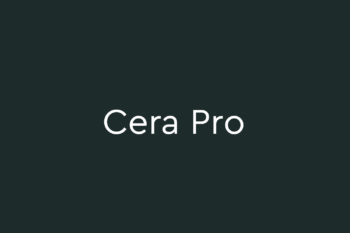

This font has been used in many projects since its release date. You can use this font in various projects like graphic designing, Logo designing, document designing, Birthday cards, invitation cards, wedding cards, and many more. The design itself is very simple and attractive that anyone can easily understand. This font has already got so much success because of its simplicity. The most adorable part of this font is the design of this font based on Akzidenz Grotesk Font. The typeface is also known as Neue Helvetica. It also contains different letters, symbols, and numbers. This font is licensed by the company and has various typefaces. The design of this font is very easy and it has a large number of readability criteria that is why many corporations like android phones have used this font in their business. We often find this font on our android devices. This font has very attractive looks and it can also make any typographic file in a way that every viewer will admire. This font is on android devices because this typeface has a very exceptional design. The designer of this font is Max Miedinger and Eduard Hoffmann. Its thinnest weight was designed by Berton Hasebe.Helvetica Neue Condensed Font is a member of the Sans Serif font typeface family. Schwartz completed the family in 2010 for Richard Turley at Bloomberg Businessweek. Schwartz’s revival was originally commissioned in 2004 by Mark Porter for the redesign of The Guardian, but not used. So rather than trying to rethink Helvetica or improve on current digital versions, this was more of a restoration project: bringing Miedinger’s original Neue Haas Grotesk back to life with as much fidelity to his original shapes and spacing as possible (albeit with the addition of kerning, an expensive luxury in handset type).” “Much of the warm personality of Miedinger’s shapes was lost along the way. In the 1980s Neue Helvetica was produced as a rationalized, standardized version.įor Christian Schwartz, the assignment to design a digital revival of Neue Haas Grotesk was an occasion to set history straight. During the transition from metal to phototypesetting, Helvetica underwent additional modifications. For instance, the matrices for Regular and Bold had to be of equal widths, and therefore the Bold was redrawn at a considerably narrower proportion. The typeface was soon revised and released as Helvetica by Linotype AG.Īs Neue Haas Grotesk had to be adapted to work on Linotype’s hot metal linecasters, Linotype Helvetica was in some ways a radically transformed version of the original. Neue Haas Grotesk was to be the answer to the British and German grotesques that had become hugely popular thanks to the success of functionalist Swiss typography. The first weights of Neue Haas Grotesk were designed in 1957-1958 by Max Miedinger for the Haas’sche Schriftgiesserei in Switzerland, with art direction by the company’s principal, Eduard Hoffmann.


 0 kommentar(er)
0 kommentar(er)
